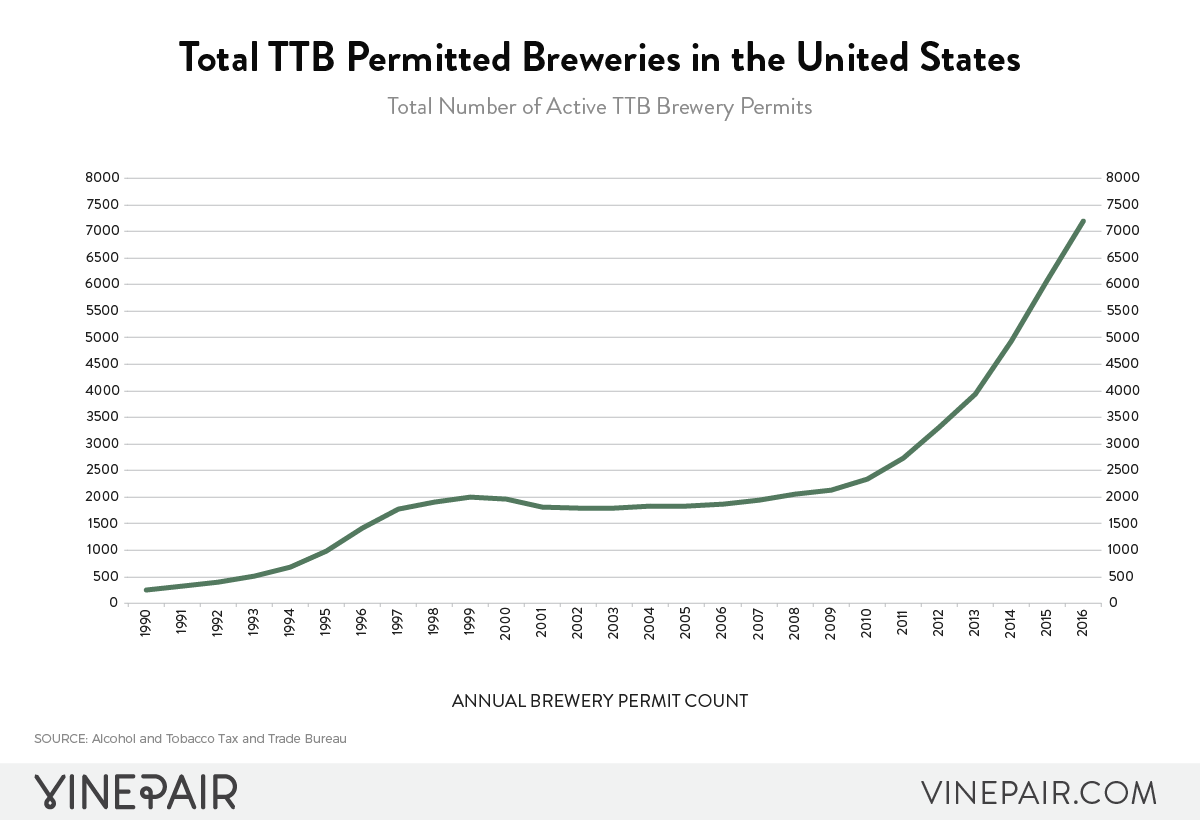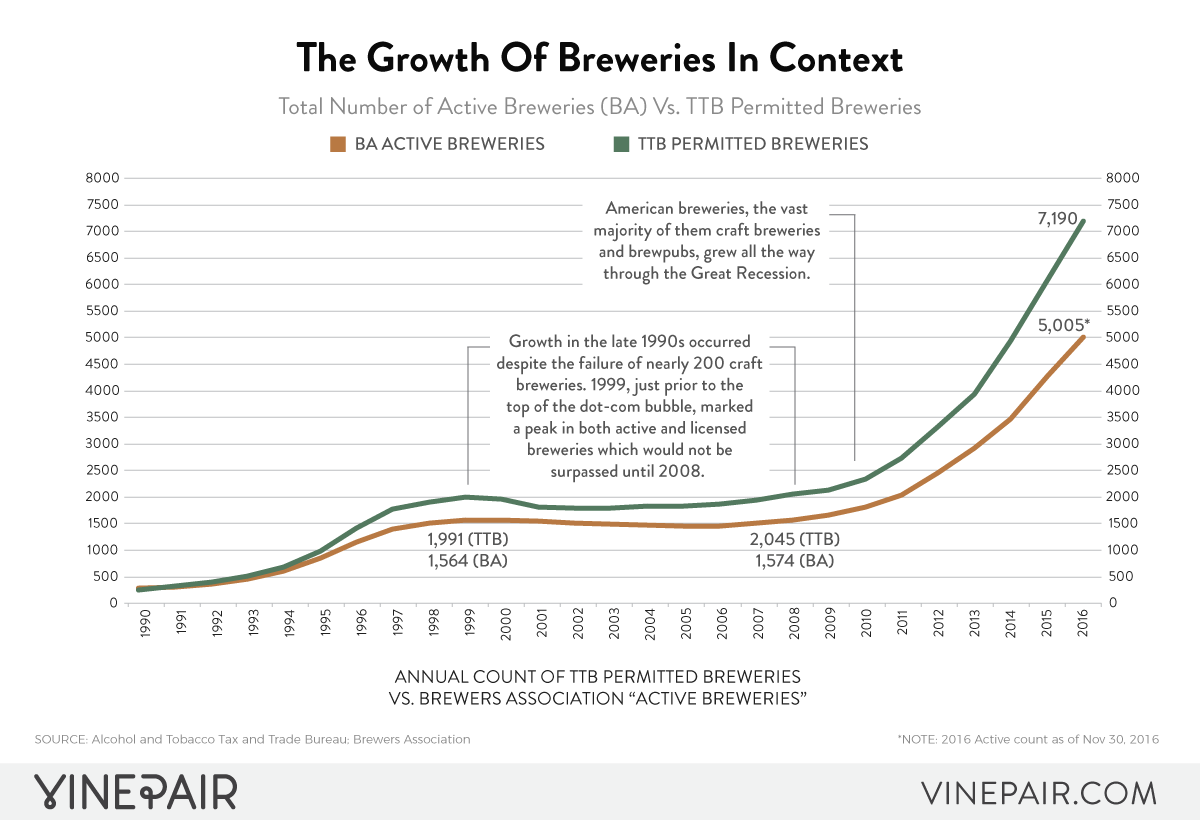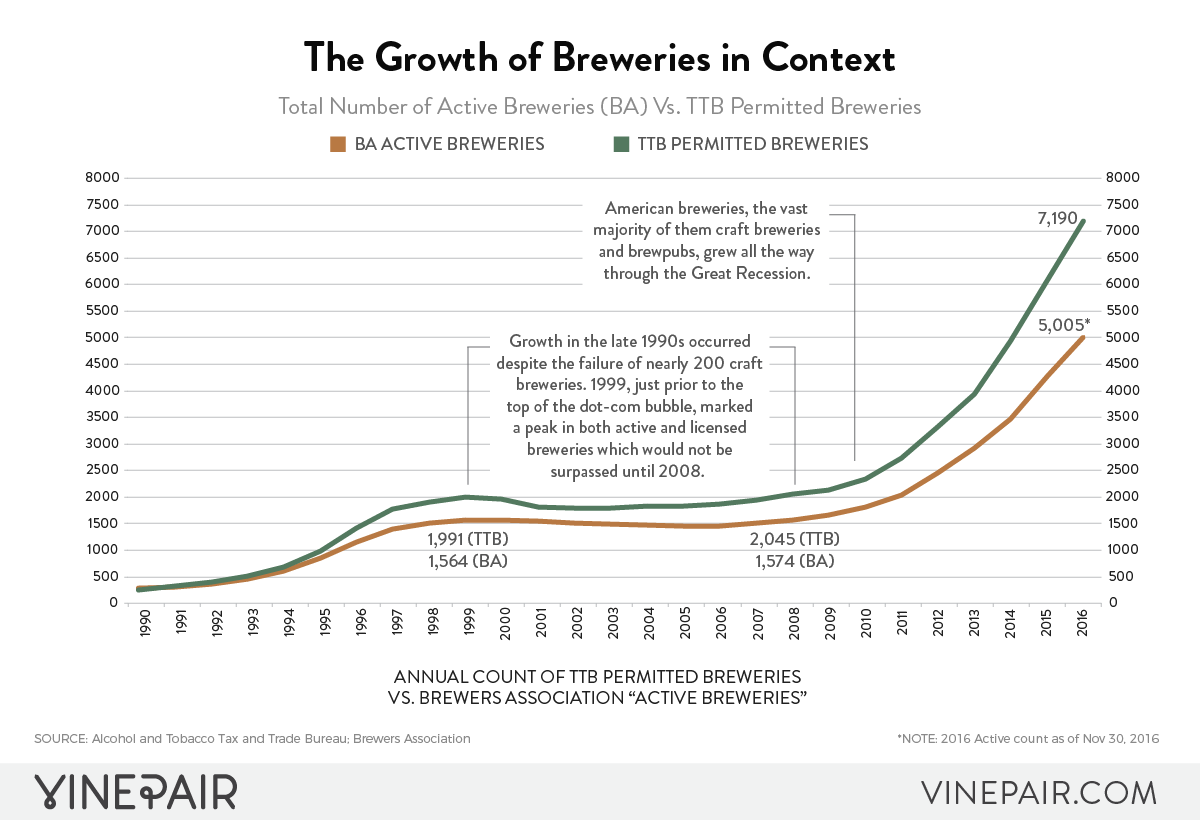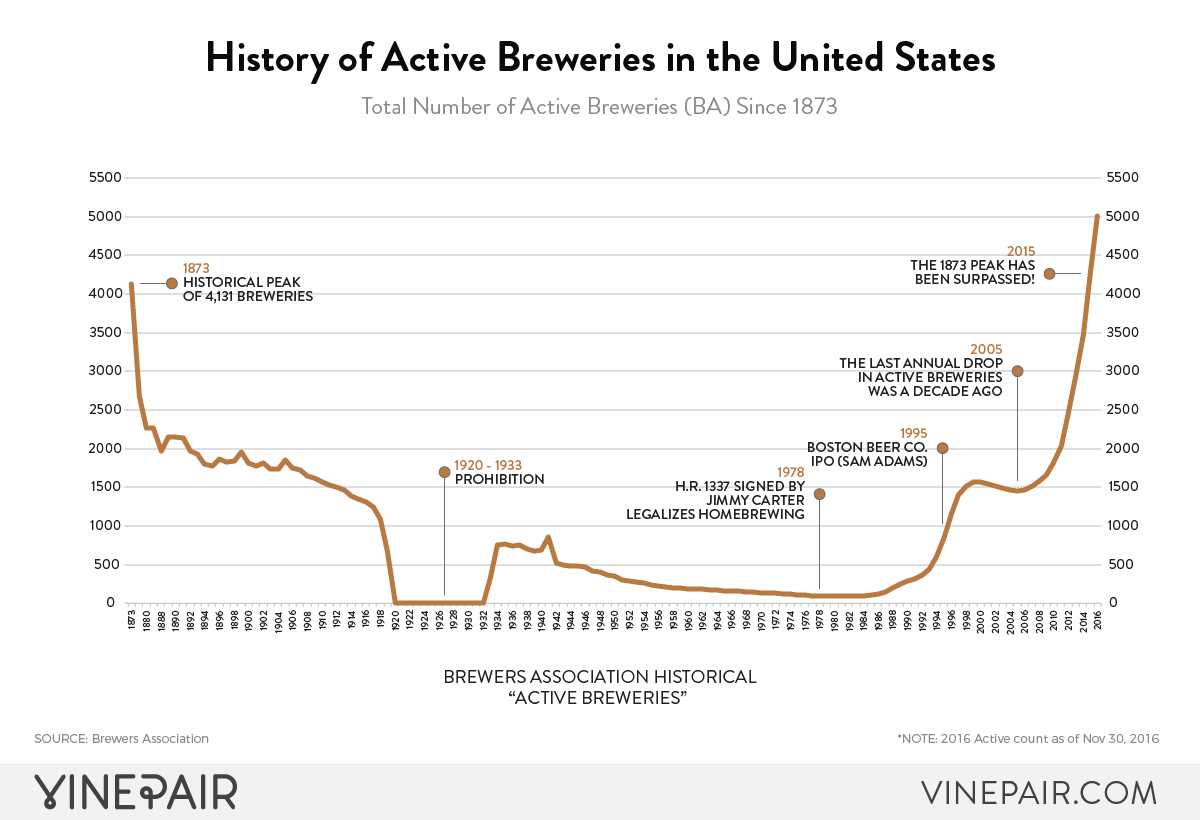There have never been as many breweries in the U.S. as there are today. But the history of America's brewing renaissance isn’t as straightforward as you might think. It began in the late 1960s and 1970s, a time when regional breweries were consolidating and even closing. It was in that business environment that the real driving force behind this renaissance — the craft beer movement — started to really pick up steam.
In the late 1980s/early 1990s, craft began to cross over from homebrewing hobbyist appeal into the mainstream. This early momentum gave way to two waves of massive growth. The first wave crested in 1999, just as the dot-com bubble was getting ready to collapse into a recession. After a half decade shake-out, an even greater boom began, one we're still enjoying today.
The interactive map and the charts below offer a quarter-century window into how America rediscovered its love for great, locally-brewed beer. Drag the slider over the map to the right to advance the data from 1990 all the way up to 2016 (or use the left and right keys if your device has a keyboard).
The interactive visualization on this page requires a modern browser. Get one here!
The Numbers Behind America's Brewing Renaissance
So what does this count of "permitted" breweries mean actually mean? As Brewbound helpfully explains, "permitted” breweries refers to brick and mortar facilities (but not contract brewers) that have been given permission to set up shop by the TTB – the federal government’s Alcohol and Tobacco Tax Bureau. “Permitted” breweries also include brewers who recently closed operations but have not yet been “delisted” by the TTB.

And we should expect the number of active breweries to continue to grow. For nearly every currently operating brewery, as of 2016, there is currently another brewery in planning. Of course, they won't all see the light of day, but the sheer number of licensed but not yet active breweries cannot be ignored. At the end of 2016, that number was over 2,000. To put that in context, there were only 1,813 active breweries as recently as 2010.

So what could derail this tremendous growth? Experts don’t think market saturation will present much of a problem, especially as the total count is dominated by microbreweries and brewpubs. Quality concerns, driven by the proliferation of relatively inexperienced homebrewers turned commercial brewers, are another matter. And while the growth in popularity of craft beer drove a boom in breweries all the way through the Great Recession, there are now thousands of commercial breweries in operation that have never experienced a truly bad economy.

While the boom began in earnest in the 1990s, the craft beer revolution started decades earlier. The combination of Prohibition and World War II had left America's beer culture in a sad state, defined by relentless consolidation and the death of local, flavorful brews. It's impossible to pin an exact date on the birth of American craft brewing, but most would agree that Fritz Maytag's purchase of a stake in Anchor Brewing in 1965 was a seminal event. The iconic Cascade hop was made available to brewers in 1972. Sierra Nevada Brewing was founded seven years later.
But the problems weren’t over yet. The bottom was finally reached in the early 1980s. There were just 80 active breweries in 1983, and less than 50 brewing companies in 1984. That’s the year Boston Beer Company was founded, joining Anchor and Sierra Nevada in helping spur American beer's epic comeback.

Notes: Where there are gaps in the TTB annual brewery data (largely confined the early 1990s), we have extrapolated the state-level brewery counts. When data was unavailable we used the count for the previous year. In the vast majority of cases unavailable data followed years where a particular state's brewery count was 0.
Data via the Brewers Association and TTB. Visualization powered by D3, TopoJSON, and Lots of Beer.






